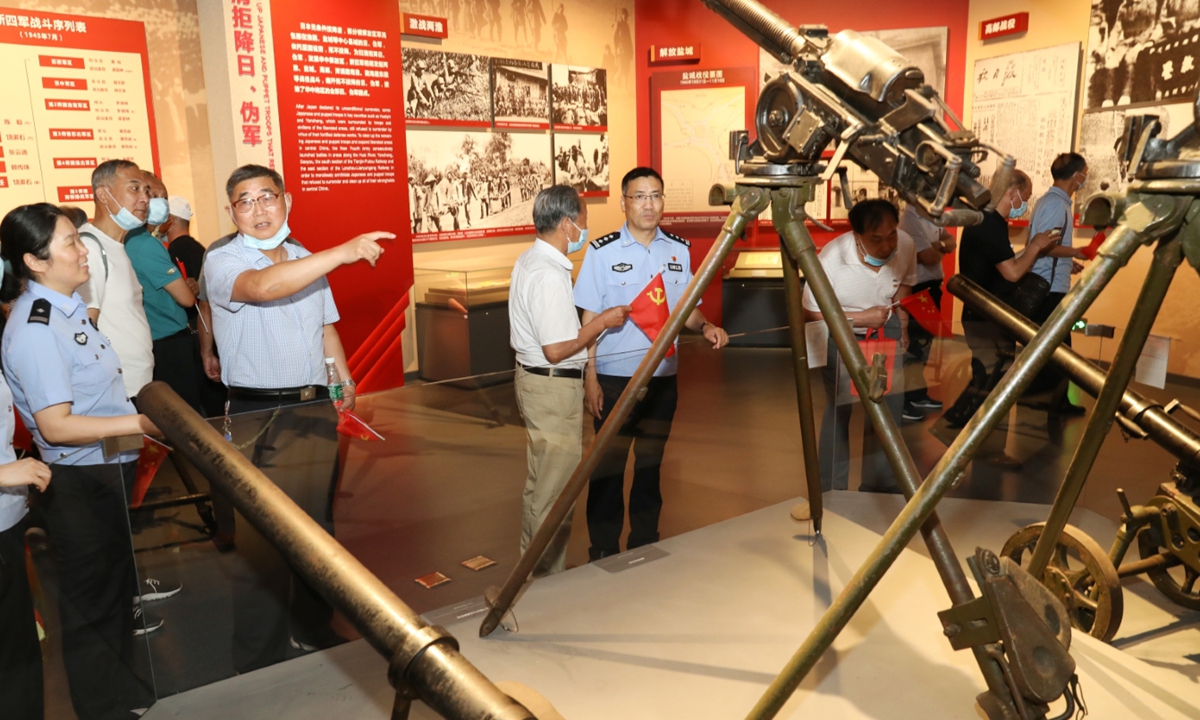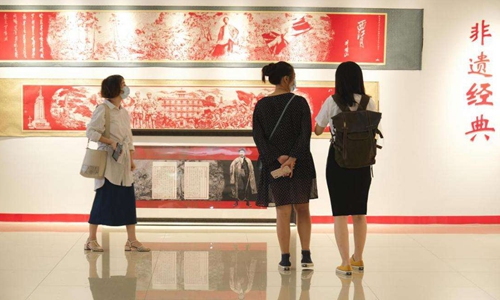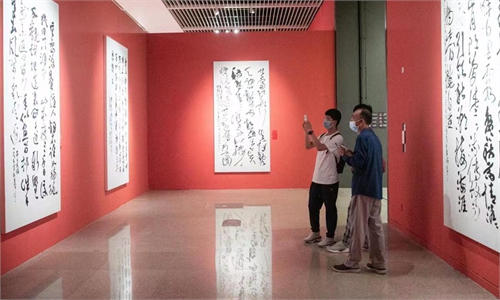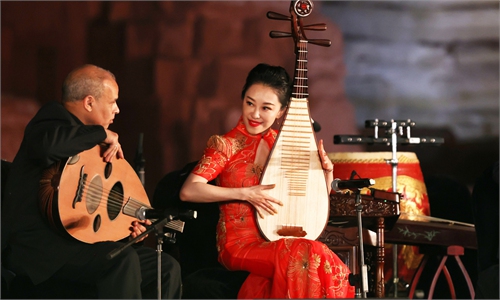ARTS / CULTURE & LEISURE
NFA Memorial Hall front-runner in promoting red culture: conference

Photo: VCG
Enhanced preservation of revolutionary relics and red culture tourism is part of efforts to promote high-quality development of historical sites of the Chinese revolution, according to a conference held at the New Fourth Army (NFA) Memorial Hall in Yancheng, East China's Jiangsu Province on Tuesday.
Representatives from the NFA Memorials Alliance across China gathered at the conference to propose ways to better leverage China's revolutionary legacy in patriotic education and carry forward revolutionary culture. The conference was organized by the National Cultural Heritage Administration (NCHA).
Home to the former site of the NFA's headquarters, Yancheng is an ancient revolutionary stronghold. The army was a key contingent of the Communist Party of China during the War of Resistance against Japanese Aggression (1931-45) and is one of the predecessors of today's People's Liberation Army.
Currently, there are 112 NFA-themed memorial sites across the country, scattered in the provinces of Jiangsu, Zhejiang, Anhui, Hubei and Shandong.
Luo Wenli, a deputy head of the NCHA, said at the conference that the revolutionary sites play a crucial role in carrying forward red culture and promoting China's revolutionary spirit.
"Digital technology will be widely used for the preservation and restoration of the revolutionary cultural relics. With in-depth research into historical events and important figures, it is imperative to curate high-quality exhibitions to promote red culture," Luo noted.
Xiong Kunxin, a professor at Minzu University of China in Beijing, told the Global Times that historical sites are the best venues for Chinese youth to learn about the hardships experienced during the Chinese revolution.
"One of the efforts could be turning the site into an ideological and political classroom where visitors could learn about the arduous journey of the revolution through immersive experiences like watching dramas and singing red songs," Xiong said.
An NFA revolutionary relics research center was also established during the conference, which saw the NFA Memorial Hall team up with Yancheng Teachers University to explore the contemporary value and ideological connotations of NFA inheriting the "red gene."
Covering a total area of more than 9,000 square meters, the memorial hall, established in 1986, has collected more than 10,000 objects. It is the most comprehensive memorial hall in the country on the history of the NFA.
In preserving the red gene, the memorial hall reached out to the army's veterans currently based in Beijing and Nanjing to collect about 1,200 historical materials during the first half of 2023. The objects have been displayed at themed exhibitions and workshops for the public.
Jiangsu is also one of the pioneers in integrating revolutionary sites and tourism to promote red culture.
The cultural and tourism departments of Shanghai, Jiangsu, Zhejiang and Anhui jointly released Yangtze River delta revolutionary cultural relic tour routes in November, allowing the tourists to gain a deeper understanding of the geographical distribution of revolutionary cultural relics in the region and its rich history in shaping the Chinese revolution.
In October, a revolution relic tour route was unveiled during a red culture tourism festival held in Pingjiang county, Central China's Hunan Province. China's first county-level revolutionary tourism route, it takes visitors to a range of historical sites, including the former site of the county committee of the Communist Party of China, the former residence of martyrs and the site of a guerrilla camp.



